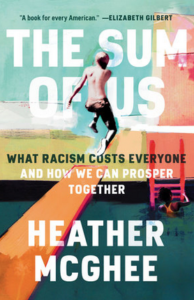Let’s make a pie.
With that simple sentence, I’ve invited you into a collaboration, but I haven’t actually asked if you want to make a pie with me. Do you also want to make a pie? How will we proceed? What norms and patterns will guide us – and what can intentionality help provide for us? At Indiana University, where I completed my Higher Education and Student Affairs master’s program, we often spoke about how important it is to be intentional in our practice, both in completing the work, and in how we showed up relationally with our students and colleagues. We used intentionality to further goals of student development and dignify relationship norms. “Be intentional” was a repeated refrain inside of my graduate experience. Intentionality is a powerful ingredient we can bring to our pie making effort and how we approach our work together.
So, we’ve chosen to make a pie, together. Both of us are in the place of wanting pie and wanting each other to be involved in the effort.
Is the pie the only thing we care about? How do we want our experience of pie making to be? How will our relationship be impacted by this experience of pie making?
One of the things that helps me find my way to intentionality in my practice at OSU is to look at an experience through a metaphor. We can use our experience of pie-making to deepen understanding about who we are in collaborations with others and build understanding about choices between us in how we will make this pie that illuminates patterns of collaboration and choices that aren’t limited to pie-making. We can also look at roles common inside of academia to consider how these roles, in archetypical form, constrain our access to choices.
If a Professor archetype is collaborating on a pie, we might see the busy professor ask that the pie crust be made ahead of time, expecting (or assuming) a level of base knowledge before deciding what will go in the crust. The professor might use communication norms that assert expertise and authority about the quality of the pie ingredients or the best way to make a pie. The professor may not see that their assertive claims make it too risky for the other to suggest an unusual, but also delicious, gluten-free crust.
Similarly, if a Campus Leader archetype is collaborating on a pie, we might come to the meeting about pie making and see that person set the timeline and predetermine the output expectations (‘traditional cherry’ or ‘key lime’). That person might not see how their suggested ideas or preferences could be heard as expectations that are limiting opportunities to consider the seasonality of fruit, the recipes preferred by the bakers, or understanding that there is a backlog of cakes that have been ordered.
If a New Student archetype is collaborating on a pie, they may be relating from a place of insecurity, unsure that pie in Corvallis is the same as pie in their hometown. They may not know how to bring up the shepherd’s pie they loved eating at their grandfather’s house. They may not know that the blackberry bushes in their backyard can be a valuable contribution to our pie-making goals.
Because archetypes and metaphors are so powerful to the human experience and how we make meaning of the world, we often find ourselves playing out scripts or norms of what dominant culture prescribes as normal. We can do this knowingly to find belonging – or unconsciously because we’re busy and operating as if on autopilot. Because we do our work inside of academia, there are some ways that norms and patterns might prescribe for us how to approach our pie making. These may or may not serve our goals. If we’re not intentional, we might find ourselves communicating or planning in a way that limits the possible pies we could cook up together.
So, remember that I want to make a pie with you? I have some ingredients, some experience and some challenging limitations getting a flaky crust. What ingredients do you have? What experience do you bring? Do you want to work together? What will our conversations be as we make this pie? After we make and consume the pie, how will our relationship have changed? What will that mean for future fruit harvests? Did my choices in relating with you create the context for you to trust me enough to tell me about your grandpa’s shepherd’s pie?
I’ll never forget asking a peer “how do you like to approach collaborations?” and seeing reflected back to me, in her response, how rarely she was asked that question. When I practice intentional collaboration with a group, I might use agendas and meeting design to create the context for collaboration that works for me, the team and our goals. If there’s anyone new to OSU or meeting each other for the first time in the collaboration, I might spend a meaningful chunk of the first meeting (30 minutes!) to build relationships and trust with the group. I like to choose conversation topics and questions that encourage everyone to share about prior roles, strengths and skills that may not be evident based on title or positionality. I’m practicing how to create a brainstorming or idea-generating process that ensures everyone—especially those with less social or positional power—have opportunities to contribute to the vision and approach of the project. Along the way, I try to promote conversation that builds understanding about everyone as whole people with lives outside of roles at OSU.
The pies we make will get eaten and enjoyed. The connections we make when we bake together will be the nourishment that resources us both for years to come. Do you want to make a pie with me?

















